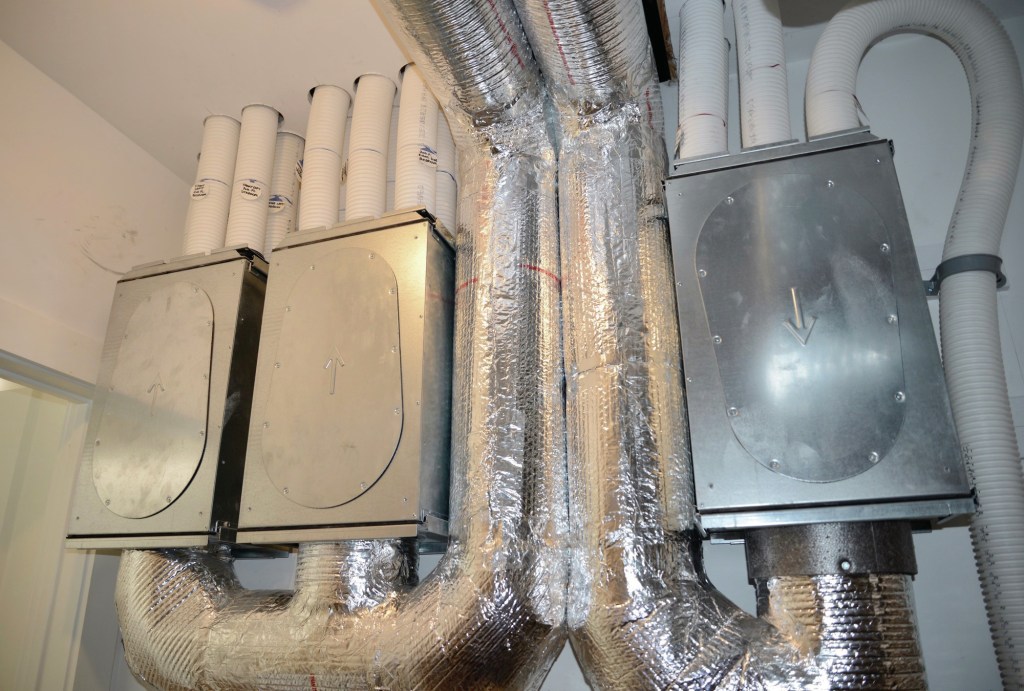Celebration Green Design & Build’s Waystone Farm project is competing in Energize Connecticut’s 2016 Zero Energy Challenge. Follow along to learn more about the inspiration for the home, the challenges the builder faced in the design and build process, and zero energy building trends and technologies.
With nearly two-thirds of a home’s energy consumption coming from space heating, air-conditioning, and water heating, a home’s mechanical systems are just as important as a home’s building envelope. This is particularly true when designing and building to the Passive House standard.
For Waystone Farm, Celebration Green Design and Build’s project team considered several key elements when planning and selecting the home’s HVAC systems including Connecticut’s climate, a root cellar in the basement, and the need for the mechanical systems to act in unison with other key principles of the Passive House design.
The team chose the Water Furnace Series 7 geothermal heat pump system to meet heating and cooling needs, a Zehnder Energy Recover Ventilator (ERV) for ventilation, and an 80-gallon Stiebel Eltron 300E heat pump for the home’s domestic hot water system. Combined with the airtight envelope and other Passive House building principles, these systems will save the homeowners between 70% to 90% of annual energy costs.
The geothermal heat pump provides heating and cooling for Waystone Farm by utilizing earth’s consistent ground temperature and converting it into usable energy through a closed-loop system. In turn, decreasing the amount of energy needed to heat and cool the home.
The ERV system recovers heat and moisture from the airstream as it passes through the core of the unit, reducing a home’s heating and cooling load and contributing to the home’s overall energy performance. ERV systems also ensure superb indoor air quality by diluting pollutants and lowering humidity. This is a result of how the system circulates air; fresh filtered air enters the home in areas like bedrooms and prime living spaces with stale air removed from areas like bathrooms, kitchens, and laundries.
The heat pump water heater was selected because of its efficiency – for every watt its compressor and fan uses, 3 to 5 watts of hot water are generated. It also provides 80 gallons of uninterrupted hot water, and as a bonus acts as a dehumidifier.
To further the homeowners’ long-term goal of being “off the grid,” Celebration also installed a solar array – a 12.8 kW PV rooftop array. This renewable solar energy helped Waystone Farm achieve a HERS rating of -8, allowing the home to produce more energy that it uses on an annual basis.
“As energy storage technology evolves and becomes more practical, Waystone Farm’s mechanical systems will allow the Heinrich’s to achieve their ultimate goal of having a house that is completely self-sustainable and leaves a small footprint,” says Bill Freeman, owner of Celebration Green Design & Build.



